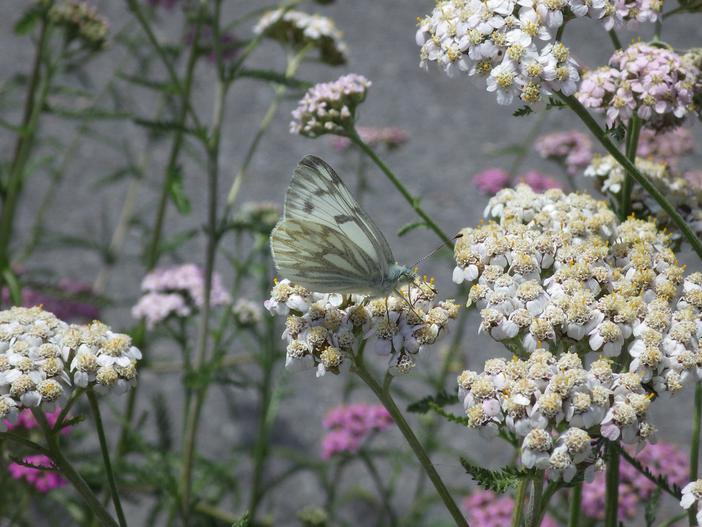Western Yarrow
(Achillea millefolium var. occidentalis)
Western Yarrow (Achillea millefolium var. occidentalis)
/
/

Gary Chang
CC BY-SA 2.0
Image By:
Gary Chang
Recorded By:
Copyright:
CC BY-SA 2.0
Copyright Notice:
Photo by: Gary Chang | License Type: CC BY-SA 2.0 | License URL: https://creativecommons.org/licenses/by-sa/2.0/ | Uploader: gcchang | Publisher: Flickr












Estimated Native Range
Summary
Achillea millefolium var. occidentalis, commonly known as western yarrow, is a perennial herb native to a variety of habitats across North America, including meadows, grasslands, and open forests. It is well-adapted to a range of conditions from lowland areas to alpine zones. Western yarrow typically grows up to 3 feet tall and features dense clusters of small, white to creamy flowers that bloom from late spring to early fall. The flowers are arranged in flat-topped inflorescences and are highly attractive to pollinators. The foliage is fern-like, aromatic, and finely dissected, adding a delicate texture to the garden.
Western yarrow is valued for its hardiness, drought tolerance, and low maintenance requirements, making it a popular choice for xeriscaping and naturalistic plantings. It is also appreciated for its medicinal properties, historically used to treat wounds and various ailments. In cultivation, it serves as an excellent plant for pollinator gardens, attracting bees, butterflies, and other beneficial insects. Western yarrow prefers full sun but can tolerate part shade and requires well-drained soils. While generally pest-free, it can occasionally suffer from mildew or rust. Overwatering or poor drainage can lead to root rot. It can spread aggressively by rhizomes and self-seeding, so gardeners should be mindful of its potential to become invasive in some areas.CC BY-SA 4.0
Western yarrow is valued for its hardiness, drought tolerance, and low maintenance requirements, making it a popular choice for xeriscaping and naturalistic plantings. It is also appreciated for its medicinal properties, historically used to treat wounds and various ailments. In cultivation, it serves as an excellent plant for pollinator gardens, attracting bees, butterflies, and other beneficial insects. Western yarrow prefers full sun but can tolerate part shade and requires well-drained soils. While generally pest-free, it can occasionally suffer from mildew or rust. Overwatering or poor drainage can lead to root rot. It can spread aggressively by rhizomes and self-seeding, so gardeners should be mindful of its potential to become invasive in some areas.CC BY-SA 4.0
Plant Description
- Plant Type: Herb
- Height: 1-3 feet
- Width: 1-3 feet
- Growth Rate: Moderate
- Flower Color: White
- Flowering Season: Spring, Summer
- Leaf Retention: Deciduous
Growth Requirements
- Sun: Full Sun, Part Shade
- Water: Medium
- Drainage: Fast, Medium
Common Uses
Bee Garden, Butterfly Garden, Drought Tolerant, Low Maintenance, Street Planting
Natural Habitat
Meadows, grasslands, and open forests across North America
Other Names
Common Names: Common Yarrow
Scientific Names: , Achillea millefolium var. occidentalis, Achillea angustissima, Achillea eradiata, Achillea gracilis, Achillea lanulosa, Achillea lanulosa f. lanulosa, Achillea lanulosa f. peroutkyi, Achillea lanulosa f. rubicunda, Achillea lanulosa subsp. lanulosa
GBIF Accepted Name: